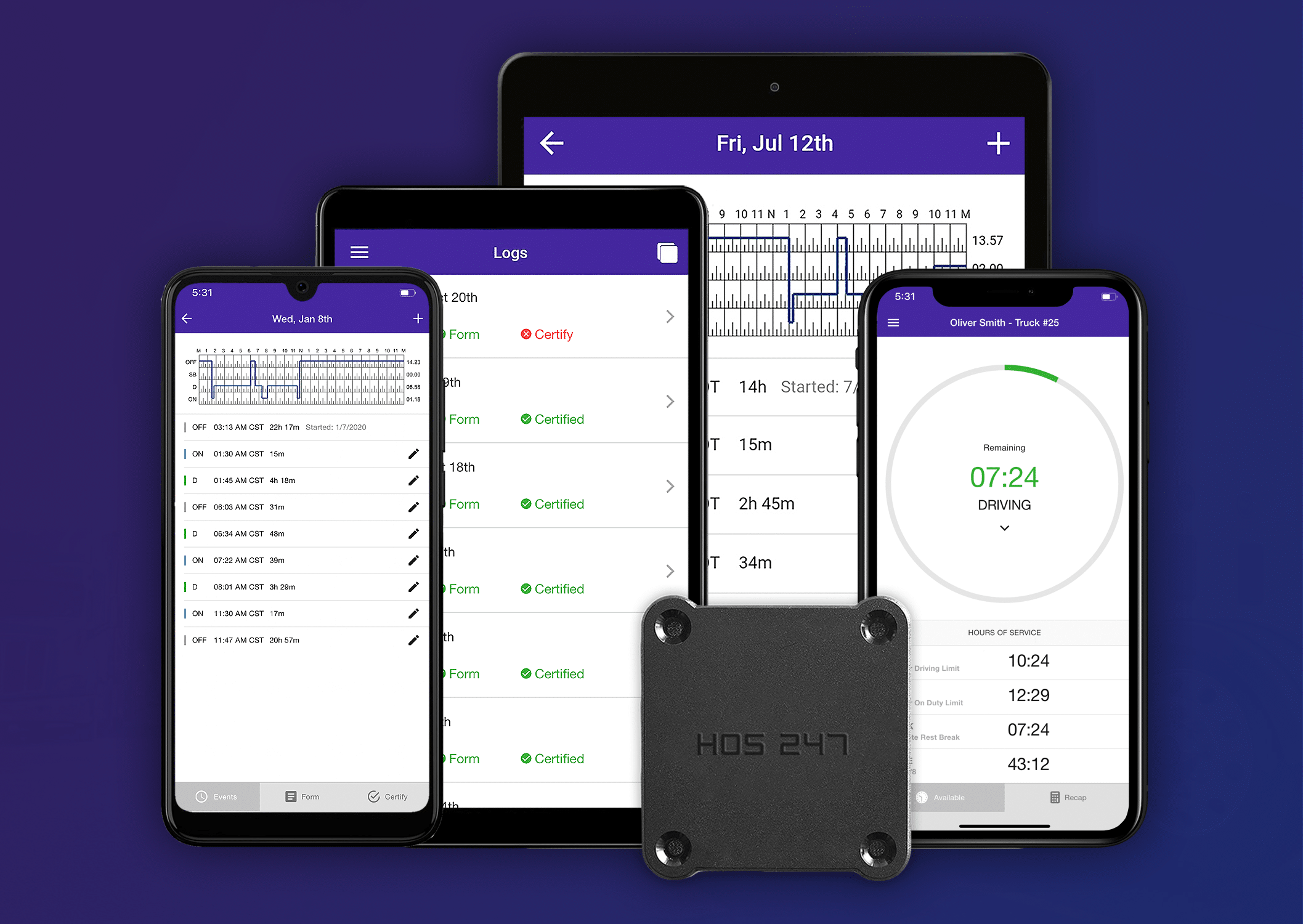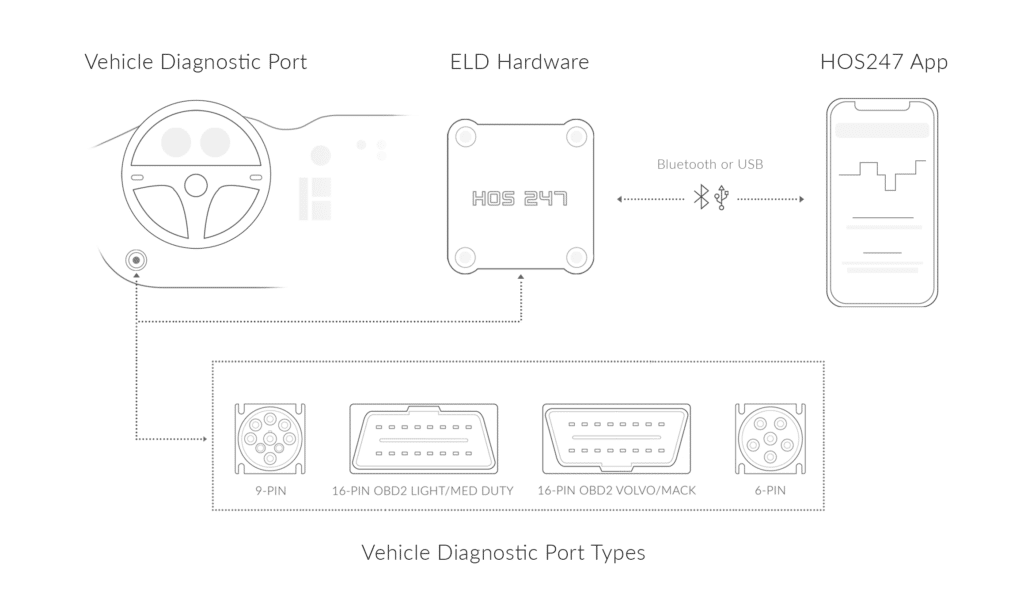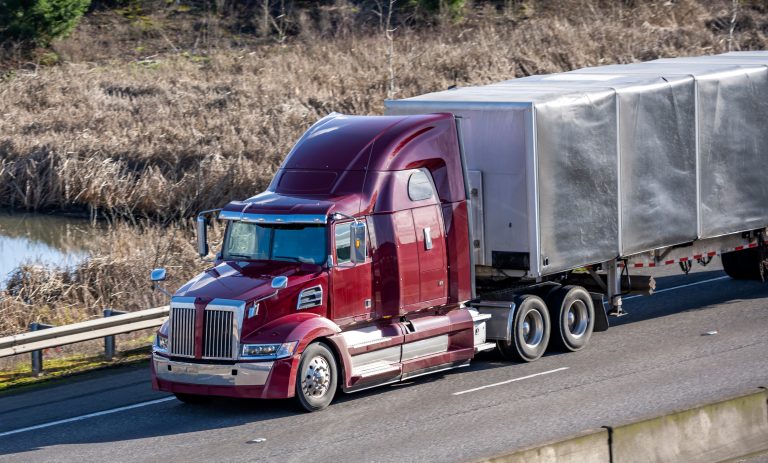Professional truck drivers depend on reliable electronic logging technology to maintain compliance while managing their daily operations efficiently. While the Transport Canada ELD mandate changed how hours of service are tracked, the quality and reliability of these devices vary significantly across the market.
Many drivers have discovered that the right ELD can streamline compliance tasks, provide accurate record-keeping, and integrate smoothly with their workflow. However, finding the best driver e log often comes after experiencing devices with connectivity issues, complicated interfaces, or inadequate customer support.
This article looks at how electronic logging devices have changed over the years, the regulations that shaped them, and what makes some electronic logbooks better than others. Whether you’re looking to switch providers or get your first ELD, understanding these differences matters.
Do you have any questions? Talk to ELD Advisor: 650-405-3372 or Request Callback
Evolution from Paper Logs to Electronic Logging Devices
The trucking industry has seen major changes in how drivers track their hours. For decades, paper logbooks were the standard for recording driving time, breaks, and duty status.
The first technological change came with Automatic On-Board Recording Devices (AOBRDs) in the 1980s. These basic digital devices were the industry’s first step toward automated logging. AOBRDs could record engine data and miles driven but lacked many features we now expect from modern systems.
By the mid-to-late 2000s, as GPS technology improved and became more affordable, more advanced logging systems appeared. These offered better accuracy and additional features beyond just tracking hours of service.
The biggest change came with today’s electronic logging devices that connect directly to a truck’s engine. This connection allows for automatic recording of driving status based on vehicle movement, eliminating many opportunities for errors that existed with older systems.

Regulatory Milestones
Government regulations have played a major role in the development of electronic logging technology:
- 2012 – MAP-21 Act. Congress directed the FMCSA to create rules requiring electronic logging devices. This set the stage for the changes that would follow.
- 2015 – ELD Final Rule Publication. The FMCSA published detailed requirements for ELDs and set deadlines for when they would be required. The rule specified technical standards, required documentation, and anti-tampering measures.
- December 2017 – Initial Compliance Date. Most carriers and drivers had to start using ELDs (or continue using existing AOBRDs) by this date.
- December 2019 – Full Compliance Phase. The grandfather period for AOBRDs ended, requiring all commercial vehicles to use ELDs that meet the technical requirements in the mandate.
- June 2021 – Canadian ELD Mandate Introduced. Transport Canada required federally regulated carriers to transition to ELDs, replacing paper logs and AOBRDs. However, enforcement was initially delayed to allow time for industry adaptation.
- January 2023 – Full Canadian Enforcement. Unlike the U.S. rollout, Canada required third-party certification of all ELDs. A progressive enforcement period ended, and full compliance became mandatory.
These regulatory changes didn’t just change the devices truckers use—they completely transformed how the industry handles hours-of-service compliance. The transition wasn’t always smooth, with many drivers finding it difficult to adapt to the new technology.
Driver E Log Rules
Canadian hours of service (HOS) regulations require commercial drivers to use electronic logs, with different rules north and south of the 60th parallel:
South of 60 (Standard HOS Rules)
- 13-hour driving limit in a 16-hour shift after 8 consecutive hours off duty.
- 14-hour on-duty limit per shift.
- 10 hours minimum daily off-duty time, with at least 30-minute blocks.
- 70-hour limit in 7 days or 120-hour limit in 14 days.
- Cycle resets:
- 70-hour cycle: Requires 36 consecutive hours off duty.
- 120-hour cycle: Requires 72 consecutive hours off duty.
- Mandatory 24-hour off-duty period after 14 days.
North of 60 (Territorial HOS Rules)
- 15-hour driving limit in an 18-hour shift after 8 consecutive hours off duty.
- 18-hour on-duty limit per shift.
- 8 hours minimum daily off-duty time, with at least 20-minute blocks.
- 80-hour limit in 7 days or 120-hour limit in 14 days.
- Cycle resets:
- 80-hour cycle: Requires 36 consecutive hours off duty.
- 120-hour cycle: Requires 72 consecutive hours off duty.
For most truckers, the real challenge hasn’t been compliance itself, but finding an electronic logbook that reliably does its job without creating new problems. This is where you’ll notice major differences in quality between various elog providers.
Poorly designed or unreliable electronic logbooks have led many drivers to look for better options—systems that keep them compliant while making their daily work easier, not harder. In the next sections, we’ll explore what makes a compliant ELD, how quality systems stand out from the competition and how they can improve your experience on the road.
Core Functions of ELDs
Modern ELDs connect to your truck’s engine and provide essential functions that simplify compliance and improve operations.

Automatic Recording
Electronic logbooks automatically track driving time by connecting to your truck’s engine control module. When your truck moves at 8 km/h or faster, the system switches your status to “Driving” without any action needed. After stopping, the ELD prompts you to update your status. Unlike paper logs, these electronic records can’t be altered to hide driving time, protecting both drivers and carriers from compliance issues.
Data Capturing
Beyond driving time, elogs record crucial information including:
- Location data via GPS whenever your duty status changes.
- Provincial and territorial mileage for IFTA reporting.
- Engine hours for maintenance tracking.
- Vehicle speed and safety events.
Driver Status Monitoring
ELDs simplify status tracking with easy-to-select options (Driving, On-Duty Not Driving, Off-Duty, Sleeper Berth). The system automatically calculates your available hours, provides violation alerts before you exceed Canadian HOS limits, and includes an Inspection Mode for roadside checks.
Quality driver elogs like HOS247 perform these functions reliably, reducing paperwork and helping ensure you stay compliant with Canadian hours of service regulations.
Benefits of Using Advanced ELDs
While all ELDs must meet the basic requirements set by Transport Canada, advanced systems offer additional benefits that can make a real difference in your daily operations. Here’s how a quality electronic logbook can improve your life on the road:
Compliance Assurance
Staying compliant with HOS regulations is essential for avoiding violations and keeping your safety rating healthy:
- Real-time compliance monitoring. Advanced ELDs track your hours and alert you before you risk a violation. This helps you plan your day better and avoid costly penalties.
- Automatic rule sets. Quality systems “Multiple HOS Rules” that are “Compliant with multiple HOS rules including Property/Passenger cycle 1 (70-hour/7-day) & cycle 2 (120-hour/14-day).” The system automatically applies the correct rules based on your operation.
- Violation prevention. With clear visual warnings and sound alerts, good ELDs help you avoid exceeding your limits. Visual notifications and sound warnings help drivers to avoid violations.
- Clean roadside inspections. When your logs are automatically recorded and easy to display, roadside inspections go much smoother. This means less time pulled over and more time making money on the road.
Enhanced Safety
Beyond just compliance, quality ELDs contribute to safer driving conditions:
- Fatigue management. By accurately tracking driving time and rest periods, ELDs help prevent driver fatigue—one of the leading causes of truck accidents.
- Reduced pressure. With automatic logging, there’s less pressure to push beyond safe limits or fudge logbooks. Dispatchers can see your available hours in real-time, leading to more realistic scheduling.
- Driver scorecards. Many advanced systems include performance metrics that help identify unsafe driving habits before they lead to accidents.
- Vehicle maintenance tracking. Some ELDs also track vehicle diagnostic information, alerting you to potential mechanical issues before they become dangerous.
Operational Efficiency
A good ELD does more than just record hours—it helps your entire operation run more smoothly:
- Reduced paperwork. Electronic logs eliminate the need to keep and submit paper records, saving time and reducing errors. No more filling out paper logs at the end of a long day.
- Streamlined inspections. During inspections, you can simply show your logs on your device rather than shuffling through paper records.
- Simplified DVIR process. Electronic Driver Vehicle Inspection Reports (DVIRs) make pre-trip and post-trip inspections faster and more thorough. As HOS247 explains, “Vehicle inspection reports are created and submitted in seconds.”
- IFTA reporting. Advanced ELDs automatically track miles by province, making quarterly IFTA reporting much easier. HOS247’s system provides “Automatic IFTA province mileage reporting saves you time and money.”
Data Accuracy
The precision of electronic logging eliminates many common problems with paper logs:
- Elimination of math errors. The system automatically calculates your hours, eliminating manual math errors that can lead to violations.
- Precise location tracking. ELDs save exact locations rather than relying on driver estimates, which improves accuracy for both compliance and operations.
- Consistent recording. Unlike manual logs, which might be filled out hours after the fact, ELDs record information in real-time, ensuring accuracy.
- Detailed reports. Fleet managers can access accurate data to identify inefficiencies and make improvements to routes, scheduling, and operations.
- Defensible records. In case of disputes or audits, electronic logs provide tamper-resistant records that protect both drivers and carriers.
By choosing an advanced electronic logging solution like HOS247, you get all these benefits while still maintaining a system that’s easy to use. The right ELD becomes a valuable tool that helps you work more efficiently and safely, not just another regulatory burden to deal with on the road.
Challenges with Traditional ELDs
Despite the benefits of electronic logging, many drivers face frustrating issues with their current ELD systems. Understanding these common problems can help you identify whether your current solution needs an upgrade.
User Interface Issues
Many electronic logbook apps have interfaces that seem designed without considering the driver’s actual needs. Complex menus require multiple taps to perform basic functions like changing duty status. Poor visual design makes screens difficult to read in varying light conditions. Slow response times waste valuable minutes throughout your day. When every stop requires fighting with your ELD, those wasted moments add up to significant lost time over a week.
Connectivity Problems
Unreliable connections create serious headaches for drivers. Bluetooth connections frequently drop without warning, and cellular connectivity issues in rural areas create gaps in logging that can trigger violations. When connections are restored, some ELDs fail to properly update all information, creating discrepancies that are difficult to explain during inspections. These aren’t just minor annoyances—they can lead to compliance problems and create unnecessary stress during roadside checks.
Hidden Costs
Many ELD providers advertise low initial prices but hide additional charges in the fine print. Activation fees, monthly data charges, update fees, and premium support costs can quickly double or triple your expected expenses. Long-term contracts with heavy cancellation penalties trap you with underperforming systems or force you to pay steep fees to switch providers. What initially seemed affordable often becomes a costly burden that affects your bottom line while delivering subpar performance.
The Real-World Impact
For professional drivers navigating challenging routes, an unreliable electronic logbook isn’t just an inconvenience—it’s a serious liability. When you’re hundreds of kilometers from the nearest service center or battling extreme weather conditions, the last thing you need is a device that freezes up or loses connection. The varied challenges of long-haul routes—from isolated highways to congested urban corridors and busy border crossings—demand ELD systems that remain functional under all conditions.
Many drivers report having to pull over in unsafe locations just to resolve ELD issues, sometimes in severe weather or high-traffic areas. Others describe lost hours battling technical support teams that don’t understand the practical realities of life on the road. These aren’t theoretical problems—they directly impact your safety, compliance, and ability to earn a living on a daily basis.
These challenges highlight why many truckers find themselves searching for better solutions. While ELDs are mandatory, the frustrations they bring shouldn’t be. Professional drivers deserve technology that supports their work rather than complicating it. By recognizing these common issues, you can make more informed decisions when evaluating your current system or considering alternatives that might better serve your specific needs on the road.

HOS247: A Quality E Log Solution
HOS247 provides comprehensive fleet management solutions designed specifically for the transportation industry. We have built a strong reputation based on reliability, ease of use, and exceptional customer service. Here’s why HOS247’s ELD solution stands out:
- User-friendly interface. Our straightforward design allows drivers to manage logs with minimal taps and clear, readable displays.
- Reliable hardware. The HOS247 logging device connects directly to your vehicle’s ECM port and communicates consistently with the logbook app. Installation takes just minutes, and the stable Bluetooth connection reduces the frustration of disconnects.
- Flexible subscription options. We provide monthly or yearly subscription-based service without long-term contracts.
- Multilingual support. Live support is available in English, Spanish, Russian, and Polish—a significant advantage for fleets with diverse drivers. We are available throughout the week, not just during business days—because trucking doesn’t stop for weekends.
- Callback policy. If your call gets disconnected while speaking with support, HOS247’s team calls you back—a simple but meaningful policy that shows respect for drivers’ time.
- Knowledgeable representatives. Our support staff understand both the technical aspects of the system and the real-world needs of truckers.
- Two-week trial period. HOS247 offers a two-week trial period, allowing you to test the system thoroughly before committing. If it doesn’t meet your needs, we provide hassle-free returns within this period.
- One-year hardware warranty. We stand behind our hardware with a full year warranty, offering free replacement for any defective devices.
- Fleet management package. Beyond basic hours of service tracking, HOS247 offers additional features including automatic IFTA calculations and electronic DVIR that allows vehicle inspection reports to be created and submitted in seconds.
Unlike many providers that treat support as an afterthought, HOS247 puts customer satisfaction at the center of our business model. Rather than treating the ELD mandate as just another regulatory burden to meet with minimum effort, we have developed a solution that actually improves drivers’ daily operations while facilitating compliance.
How to Transition to a Better Driver E Log
Making the switch to a new ELD system doesn’t have to be complicated. With the right approach, you can upgrade to a better solution without disrupting your operations.

Assessment
Begin by identifying exactly what problems you need to solve. What frustrates you most about your current ELD? Make a list of must-have features based on your actual needs, not marketing hype.
Check your current contract for termination fees or equipment return requirements to avoid unexpected costs. Talk to your drivers about their experiences—they’re the ones using the system every day and will have valuable insights about what works and what doesn’t.
Implementation
Take advantage of trial periods before committing. For multiple trucks, consider a phased rollout rather than switching everything at once. This makes troubleshooting easier and less stressful. Look for devices with a simple installation process that drivers can complete in minutes without special technical skills.
Before hitting the road, test all essential features including duty status changes, inspection mode, and log management. This ensures you’re comfortable with the system when it really matters.
Training
Invest in proper training for yourself and your drivers. Schedule dedicated time for learning the new system rather than trying to squeeze it in between loads.
Focus first on the daily operations—changing status, managing logs, and handling inspections. These are the functions you’ll need immediately. Advanced features can wait until you’re comfortable with the basics.
Create a simple reference guide covering common tasks and keep it in your truck for quick reference. If you have multiple drivers, designate experienced users who can help others with questions.
Support Resources
Save the provider’s support number in your phone for quick access when needed. Familiarize yourself with the online portal where you can monitor compliance and manage your account. Share tips and solutions among your team to help everyone master the system faster.
Remember that switching to a new ELD takes some adjustment time. Be patient during the first few weeks as you build new habits and routines with your improved system.
Conclusion
The evolution from paper logs to electronic logging devices has transformed how the trucking industry manages compliance and efficiency. While the ELD mandate created initial challenges, the right system can turn a regulatory requirement into a valuable operational tool.

Quality driver e logs like HOS247 offer significant benefits beyond basic compliance, including enhanced safety, improved efficiency, and better data accuracy. Their user-friendly interface, reliable hardware, and responsive customer support address the common frustrations many drivers experience with other systems.
The right ELD should make your job easier, not harder. Quality systems streamline operations while helping you stay compliant. For professional drivers managing tight schedules and challenging conditions, having a reliable system makes a significant difference in daily work life.
If you’re struggling with an unreliable or difficult-to-use system, consider taking advantage of HOS247’s two-week trial. In trucking, where time directly impacts your bottom line, a dependable, efficient electronic logbook isn’t just a compliance tool—it’s an essential partner for success on the road.

As an expert in B2B and B2C sales, I’ve dedicated myself to perfecting sales processes and client retention strategies in the logistics and trucking industry. I have significantly contributed to the expansion of the ELD service, catering to retail and wholesale clients in need of HOS247 ELD solutions. My unwavering commitment to implementing state-of-the-art sales techniques and technologies ensures the continuous growth and success of businesses I work with.












The Canadian ELD mandate has been talked about at length among truckers and carriers for a couple of years now. According to this legislation, commercial vehicle owners and drivers operating in Canada must switch to a certified electronic logbook before

As a trucker, you know that electronic logging devices (ELDs) are more than just another gadget in your cab – they’re your digital co-pilot for staying compliant and running smooth operations. Whether you’re shopping for your first electronic logbook or

Improve Business Performance in Canada with GPS Fleet Tracking Technologies Whether you have a small fleet of vans or a large fleet of trucks, GPS tracking can help you improve your efficiency, safety, compliance, and profitability. In this article, we